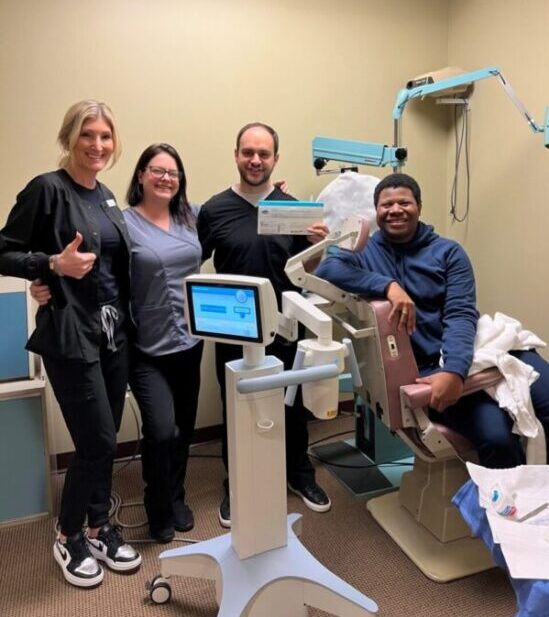Keratoconus Journey: J’Shawn

Even before graduating high school, J’Shawn Gill was already an accomplished ballet and Broadway jazz dancer, starring in a music video for “This is Me” from the movie “The Greatest Showman” along with the cast of the popular TV show “Queer Eye”. His involvement led to an appearance on The Today Show and several other media interviews.
Since he was young, dance has always been J’Shawn’s passion. But his lifelong love of performing was threatened when he started noticing a rapid decline in his vision. In 2020, at age 20, he started experiencing blurred vision and headaches that led to squinting and excessive eye rubbing, with his mom noticing he was holding his phone just inches from his face to read the screen.
This went on for a few months before J’Shawn agreed to make an appointment to get his eyes checked, after a lot of convincing and pressure from his mom. They figured he likely needed to be prescribed glasses or contact lenses, however, J’Shawn’s broader long-term vision health was not on their radar at all.

After running some tests, J’Shawn was diagnosed with a progressive eye disease called keratoconus (KC) in one eye, a serious condition that affects the cornea—the surface of the eye—and can lead to significant vision loss if left untreated. His doctor promptly recommended he receive iLink®, the first and only FDA-approved corneal cross-linking procedure that slows or halts the progression of keratoconus and helps preserve vision.
Returning home from the eye doctor, J’Shawn and his mom did some research on KC and the iLink procedure, which eased some of their anxiety surrounding the diagnosis and treatment. His doctor did, however, explain that without this treatment, his vision would likely deteriorate which could lead to blindness, so for J’Shawn, it was a no-brainer to move forward with the procedure.
Thanks to the information and thorough explanations provided by his doctor beforehand, on the day of his treatment J’Shawn felt positive and calm–he was more worried about how soon he could get back to dancing than about the procedure itself. He felt very comfortable during cross-linking, and other than a slight sensitivity to light in the days after, he was back to dancing within seven days after being cleared by his doctor.
With iLink, J’Shawn was able to take control of his health and slow the progression of his disease. Today his doctors are monitoring his other eye for keratoconus progression and if necessary, J’Shawn says he will get his other eye cross-linked as soon as possible to preserve his sight and ensure he can keep on dancing. J’Shawn will be attending the University of Kansas in the fall of 2023 to study psychology, and he is grateful that his treatment will allow him to succeed at school and in all of his future endeavors.
Find a Cross-Linking Doctor Near You
The results described on this site are based on data collected regarding short- and intermediate-term efficacy of treatment. Individual results are not guaranteed and may vary.